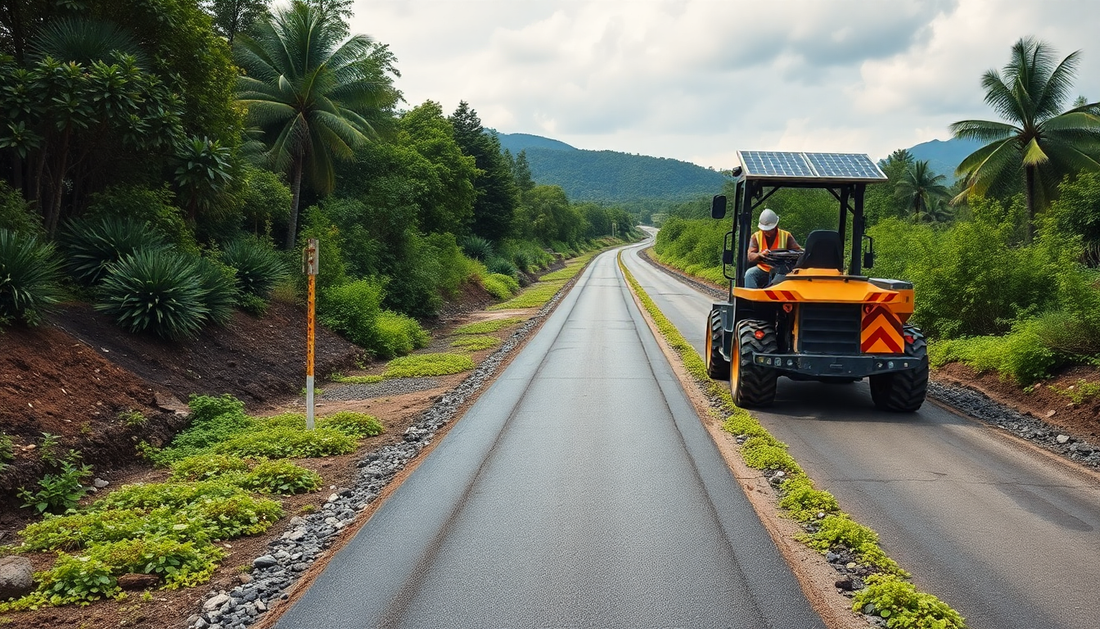In an era where environmental consciousness is at the forefront of global concerns, the construction industry faces a pressing challenge: how to build the infrastructure our societies demand while minimizing the impact on our planet. Traditional road construction methods, with their heavy reliance on carbon-intensive materials and energy-guzzling processes, have long been a significant contributor to the environmental crisis. However, a new wave of eco-friendly road construction techniques is emerging, offering a glimmer of hope for a more sustainable future.
The Need for Sustainable Infrastructure
As the world's population continues to grow and urbanization accelerates, the demand for efficient transportation networks has never been greater. Governments and policymakers are under increasing pressure to develop infrastructure that can support economic growth and social mobility while simultaneously addressing the pressing environmental challenges we face. The traditional approach to road construction, with its heavy reliance on energy-intensive materials like concrete and asphalt, has come under intense scrutiny for its significant carbon footprint and environmental degradation.
The environmental impact of conventional road building is multifaceted and far-reaching. The extraction and processing of raw materials, the energy-intensive manufacturing processes, and the emissions generated during construction all contribute to the overall carbon footprint of a road project. Moreover, the disruption of natural habitats, the pollution of waterways, and the generation of waste during the construction and maintenance phases have a profound impact on local ecosystems and biodiversity.
Embracing Eco-Friendly Road Construction Techniques
In response to these pressing concerns, a new generation of eco-friendly road construction techniques has emerged, offering a more sustainable approach to infrastructure development. These innovative methods focus on reducing the environmental impact of road building while maintaining the necessary functionality and durability.
Recycled Material Usage
One of the key strategies in eco-friendly road construction is the increased use of recycled materials. Instead of relying solely on virgin resources, engineers and contractors are exploring ways to incorporate recycled asphalt, concrete, and even plastic waste into the road-building process. This not only reduces the demand for new raw materials but also diverts waste from landfills and oceans, contributing to a more circular economy.
Green Engineering Techniques
Alongside the use of recycled materials, eco-friendly road construction also emphasizes the adoption of green engineering techniques. This includes the use of energy-efficient equipment, the optimization of construction processes to minimize waste and emissions, and the integration of renewable energy sources into the construction workflow. By prioritizing sustainability at every stage of the project, these techniques help to significantly reduce the carbon footprint of road building.
Sustainable Design Principles
Eco-friendly road construction also embraces sustainable design principles that go beyond the construction phase. This includes the incorporation of features that promote water management, enhance biodiversity, and reduce the urban heat island effect. For example, the use of permeable pavement and the integration of green spaces along the road can help to mitigate the impact of stormwater runoff and improve local climate resilience.
Successful Eco-Road Projects Around the World
The shift towards eco-friendly road construction is not just a theoretical concept; it is being put into practice in various parts of the world, with impressive results. From the Netherlands' pioneering use of recycled plastic in road construction to India's innovative use of waste materials in rural road development, these case studies demonstrate the feasibility and benefits of sustainable infrastructure projects.
In the Netherlands, the city of Zwolle has made headlines for its innovative "PlasticRoad" project, which involves the use of recycled plastic in the construction of bicycle paths and roads. This approach not only reduces the reliance on traditional materials but also helps to address the growing problem of plastic waste. The project has been praised for its durability, low maintenance requirements, and reduced carbon footprint.
Similarly, in India, the government's Pradhan Mantri Gram Sadak Yojana (PMGSY) program has been leveraging waste materials, such as fly ash and plastic, to build rural roads. This initiative not only provides much-needed infrastructure to remote communities but also contributes to the circular economy by repurposing waste products. The program has been hailed as a model for sustainable road development, particularly in developing regions where resources are scarce.
Overcoming Challenges and Looking Ahead
While the adoption of eco-friendly road construction techniques is gaining momentum, there are still significant challenges that need to be addressed. Barriers such as higher upfront costs, limited availability of recycled materials, and the need for specialized expertise can hinder the widespread implementation of these sustainable practices.
However, as the urgency to address climate change and environmental degradation intensifies, the pressure on the construction industry to embrace more sustainable solutions is mounting. Governments, policymakers, and industry leaders are increasingly recognizing the long-term benefits of eco-friendly road construction, both in terms of environmental preservation and cost-effectiveness.
Moreover, technological advancements and continued research in this field are paving the way for even more innovative solutions. From the development of self-healing concrete to the exploration of alternative binders derived from organic materials, the future of eco-friendly road construction holds immense promise.
Conclusion: Paving the Way to a Greener Future
As we navigate the complex challenges of sustainable development, the construction industry has a pivotal role to play. By embracing eco-friendly road construction techniques, we can not only reduce the environmental impact of our transportation infrastructure but also set the stage for a more resilient and livable future.
The journey towards a greener, more sustainable road network is not without its obstacles, but the potential rewards are immense. By investing in innovative materials, optimizing construction processes, and prioritizing sustainable design principles, we can build the roads of tomorrow that are not only functional but also environmentally responsible.
The time to act is now. By collectively embracing the principles of eco-friendly road construction, we can pave the way to a greener, more sustainable future, one project at a time.

